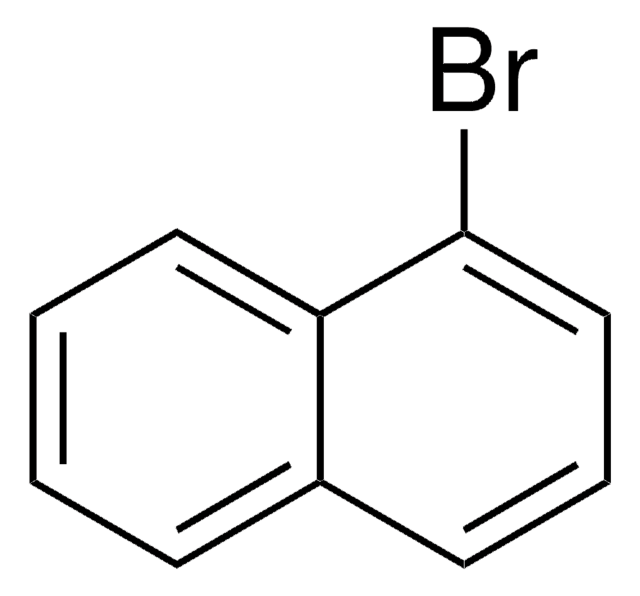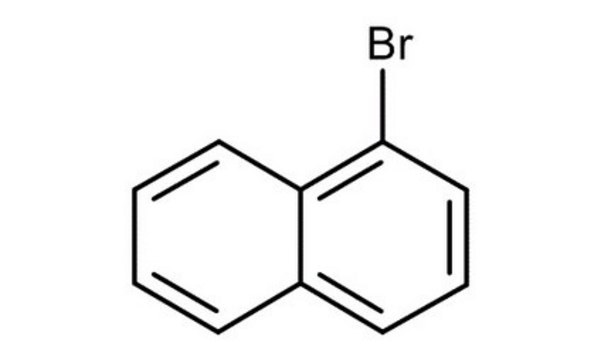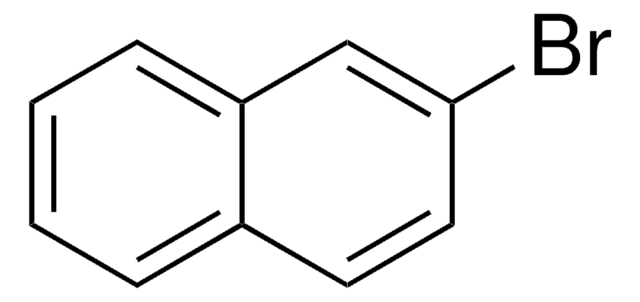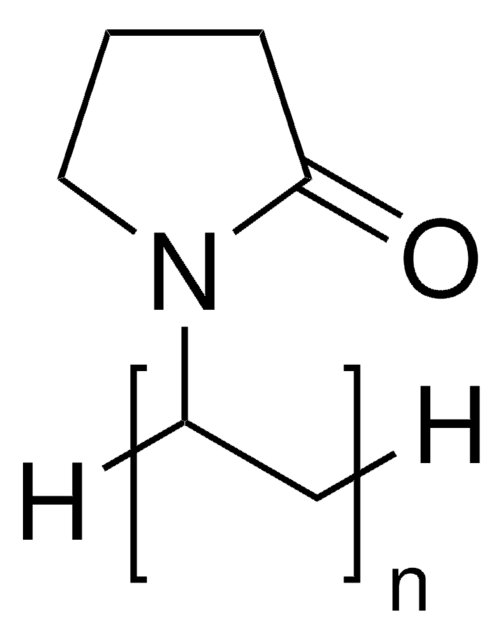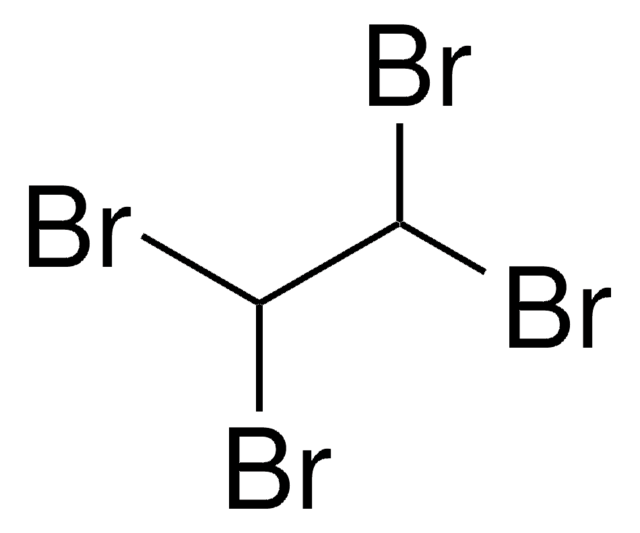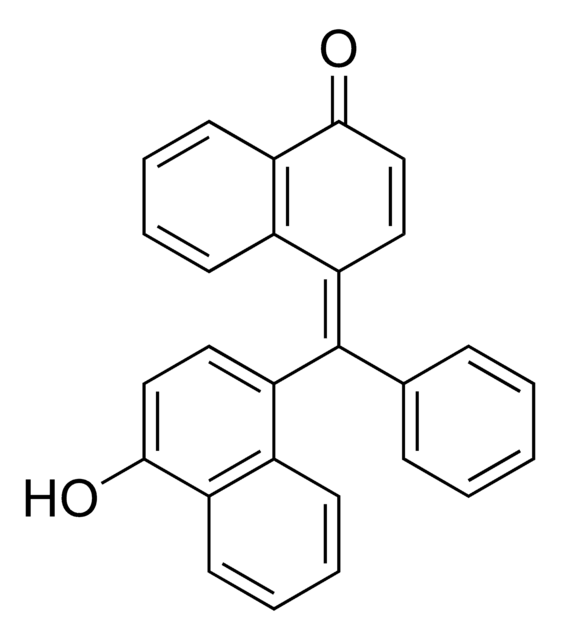17640
1-Bromonaphthalene
≥95%
Synonym(s):
1-Naphthyl bromide
About This Item
Recommended Products
Quality Level
Assay
≥95%
form
liquid
color
slightly yellow to deep brown-yellow
refractive index
n20/D 1.6570 (lit.)
bp
133-134 °C/10 mmHg (lit.)
mp
−2-−1 °C (lit.)
solubility
H2O: slightly soluble
alcohol: miscible
benzene: miscible
chloroform: miscible
diethyl ether: miscible
density
1.48 g/mL at 20 °C (lit.)
functional group
bromo
SMILES string
Brc1cccc2ccccc12
InChI
1S/C10H7Br/c11-10-7-3-5-8-4-1-2-6-9(8)10/h1-7H
InChI key
DLKQHBOKULLWDQ-UHFFFAOYSA-N
Looking for similar products? Visit Product Comparison Guide
Related Categories
General description
Application
Signal Word
Warning
Hazard Statements
Precautionary Statements
Hazard Classifications
Acute Tox. 4 Oral - Aquatic Acute 1 - Aquatic Chronic 1 - Eye Irrit. 2
Storage Class Code
10 - Combustible liquids
WGK
WGK 3
Flash Point(F)
230.0 °F - closed cup
Flash Point(C)
110 °C - closed cup
Personal Protective Equipment
Regulatory Information
Choose from one of the most recent versions:
Already Own This Product?
Find documentation for the products that you have recently purchased in the Document Library.
Our team of scientists has experience in all areas of research including Life Science, Material Science, Chemical Synthesis, Chromatography, Analytical and many others.
Contact Technical Service